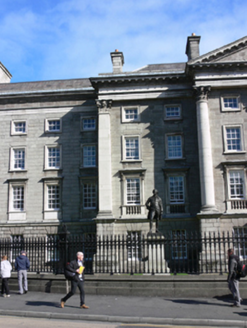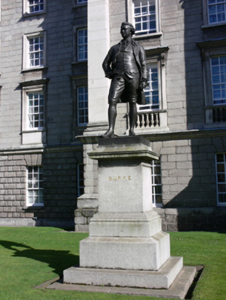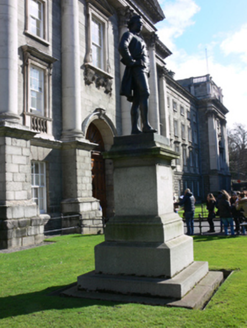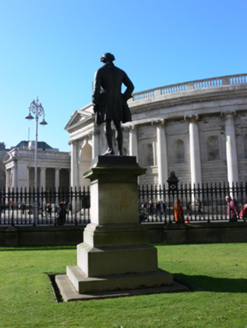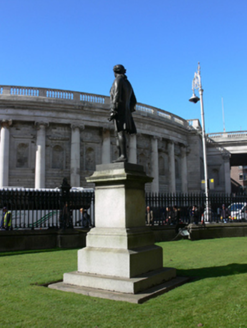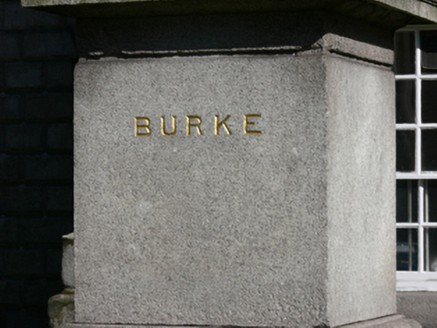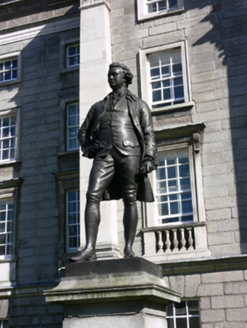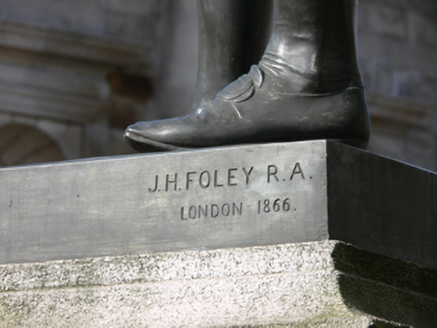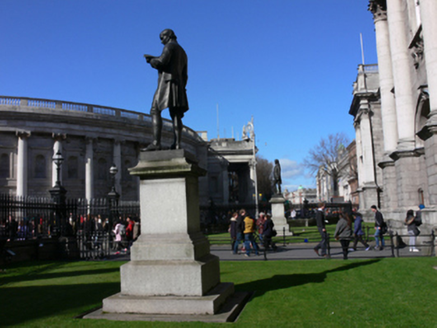Survey Data
Reg No
50020374
Rating
Regional
Categories of Special Interest
Artistic, Historical, Technical
Original Use
Statue
In Use As
Statue
Date
1865 - 1870
Coordinates
315991, 234090
Date Recorded
26/03/2015
Date Updated
--/--/--
Description
Freestanding statue, erected 1868, comprising electro-typed copper-bronze standing male figure, set on square-plan carved stepped granite plinth with incised lettering, having carved capping to base. Located on lawn, north of entrance to Trinity College.
Appraisal
This figure of Edmund Burke was made by J.H. Foley. Electro-casting or electro-typing is a casting method invented by Moritz Von Jacobi in 1838, involving the use of chemical processes to create a perfect metal coating, and was quickly adopted by many contemporary sculptors. Foley is best known for his ability to capture the individuality of his subjects by their stance, and composed three statues for College Square, Grattan (set on the traffic island to the west of Trinity College) and Goldsmith to the south, as well as this one of Edmund Burke. Burke appears defiant, yet contemplative in this composition, a fitting portrayal of a man who campaigned for Catholic emancipation in the eighteenth century, as well as elucidating complex theories on integration, social order and free trade. Burke, born in Dublin in 1729, graduated from Trinity College in 1748, having founded the precursor to the current College Historical Society. He became known as the ‘Father of British Conservatism’. This statue, along with its corresponding piece to the south, form part of an appropriate entrance ensemble, with two prominent alumni flanking the main arch. The detail and skill apparent in its execution is of considerable artistic merit, while the granite plinth serves to connect the statue with the surrounding buildings.
